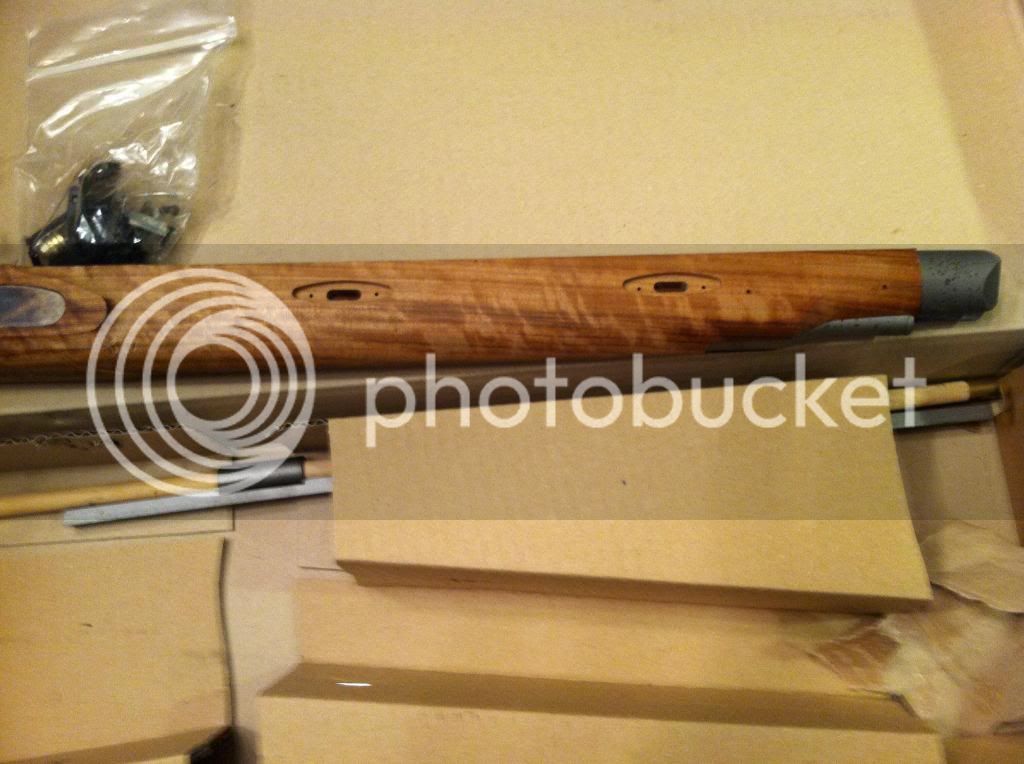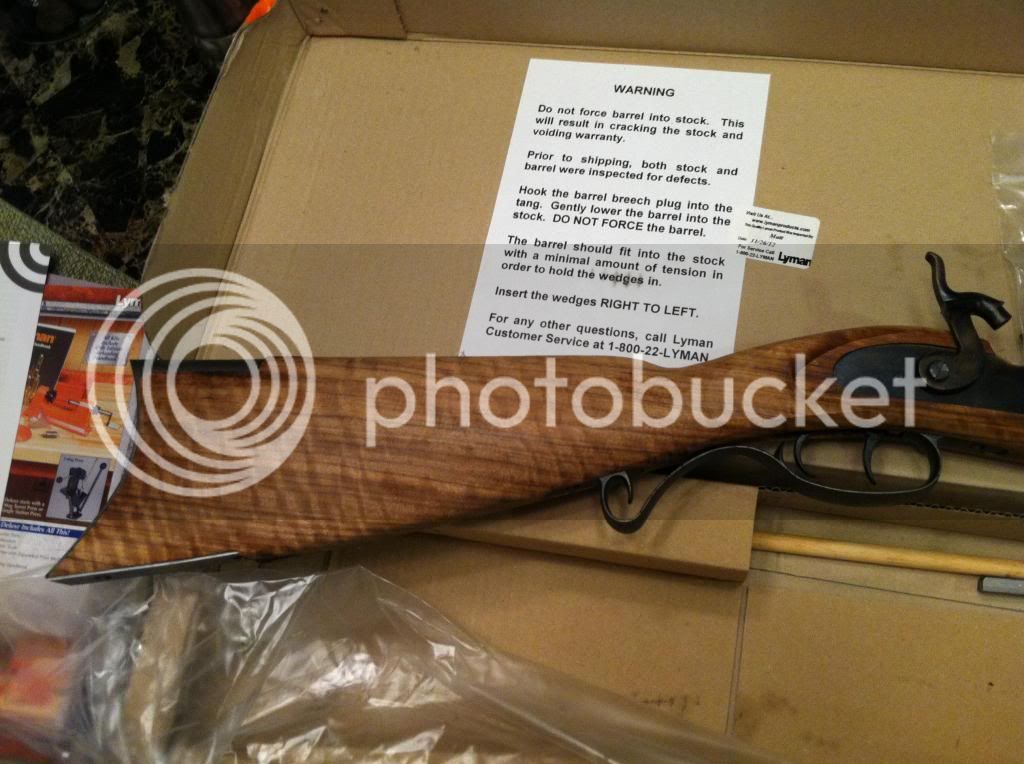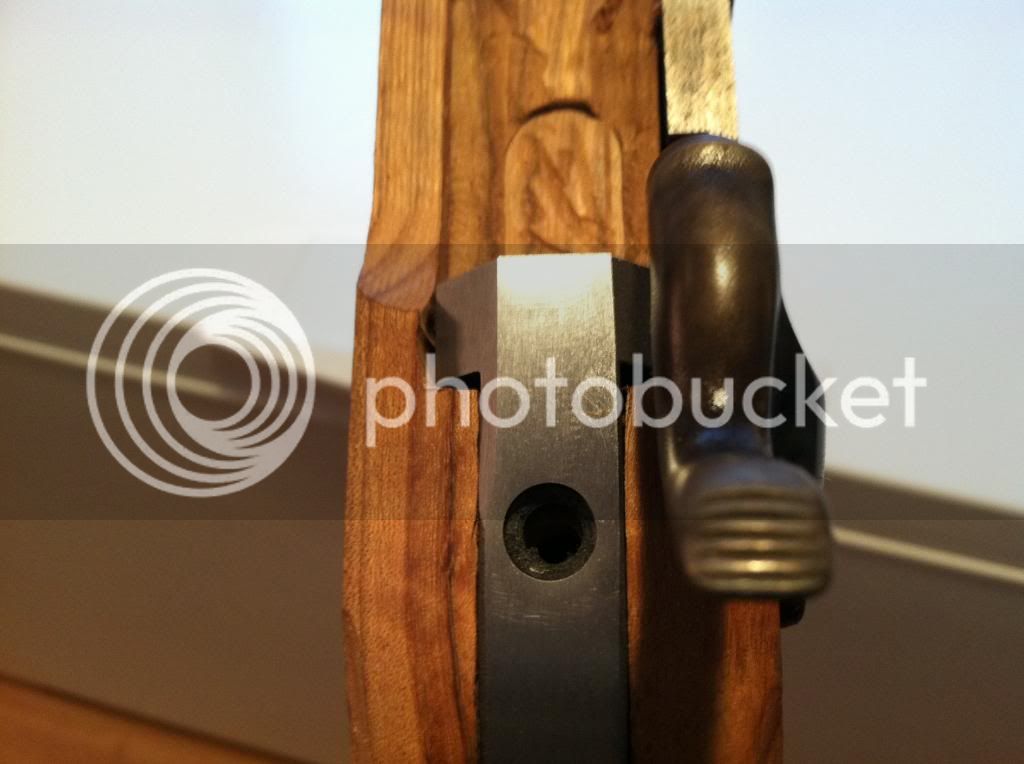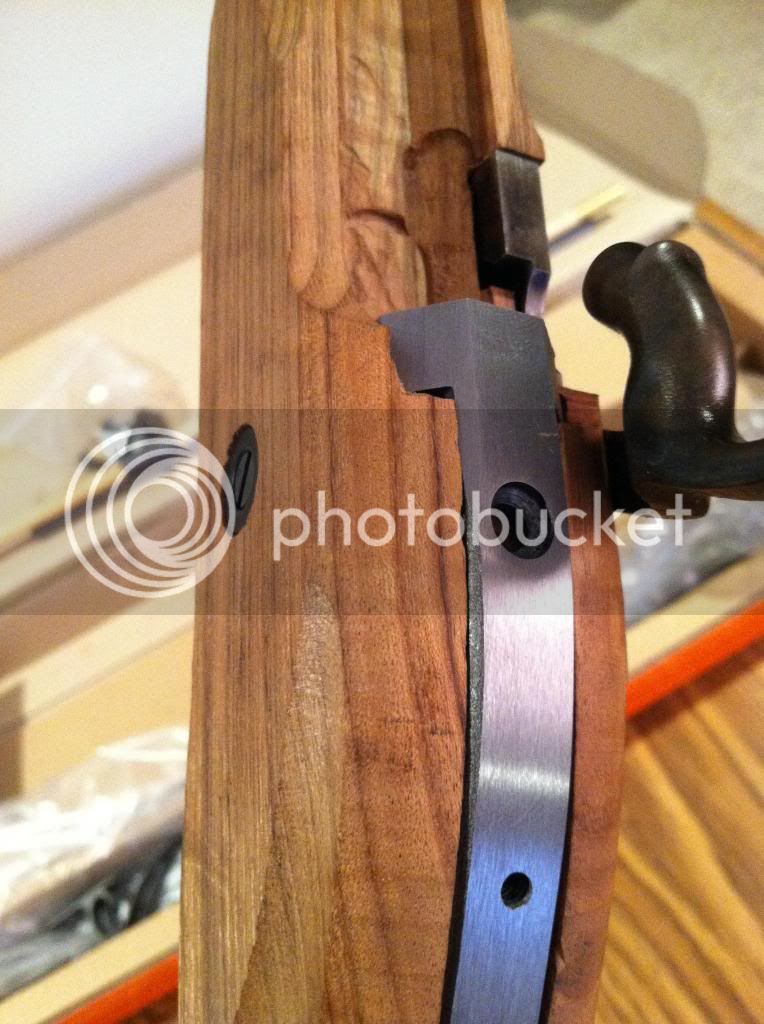splinter84
36 Cal.
- Joined
- Jan 4, 2013
- Messages
- 66
- Reaction score
- 0
Hey guys,
Well it's finally here.... my Lyman 54 GPR kit. I opted for the percussion model since this is my first ML. I received a lot of positive feedback from you guys on my last post about choosing a make and model within my budget. At the last minute I ended up calling back MidSouth Shooters and going with the kit. Hopefully I made the right decision!
I am planning to dig into it a bit tonight. I'll post some pics of the stock tomorrow and keep you guy's up to speed on my progress. I am looking forward to the build.
I purchased a couple of files, exacto knife set, and plenty of sand paper (60, 80, 120, 160, and 220 gr). I am going to make some sanding blocks out of 2x4 scrap.
I am not sure about finishing solutions for the wood yet. I am going to take plenty of stain samples and take my time finding a good finish. I have heard good things about doing a simple oil finish and that might just be the way I go. Not sure yet.
I am thinking about the LMF browning solution or the vinegar solution for treating the metal. Vinegar treatment scares me a bit, because I don't want to ruin the barrel or any screw fittings etc. If anyone has a good step by step for doing the Vinegar treatment please fill me in.
I did take note about the fragile escutcheon screws that come with the kit. I am planning to change those out with some #3 or #2 wood screws. Will have to do some digging.
I have plenty of time to get the gun done during the backside of winter and this spring. No rush to get it in the field yet.
I will be on here posting questions as they come. Looking forward to fun ride!! :thumbsup:
Well it's finally here.... my Lyman 54 GPR kit. I opted for the percussion model since this is my first ML. I received a lot of positive feedback from you guys on my last post about choosing a make and model within my budget. At the last minute I ended up calling back MidSouth Shooters and going with the kit. Hopefully I made the right decision!
I am planning to dig into it a bit tonight. I'll post some pics of the stock tomorrow and keep you guy's up to speed on my progress. I am looking forward to the build.
I purchased a couple of files, exacto knife set, and plenty of sand paper (60, 80, 120, 160, and 220 gr). I am going to make some sanding blocks out of 2x4 scrap.
I am not sure about finishing solutions for the wood yet. I am going to take plenty of stain samples and take my time finding a good finish. I have heard good things about doing a simple oil finish and that might just be the way I go. Not sure yet.
I am thinking about the LMF browning solution or the vinegar solution for treating the metal. Vinegar treatment scares me a bit, because I don't want to ruin the barrel or any screw fittings etc. If anyone has a good step by step for doing the Vinegar treatment please fill me in.
I did take note about the fragile escutcheon screws that come with the kit. I am planning to change those out with some #3 or #2 wood screws. Will have to do some digging.
I have plenty of time to get the gun done during the backside of winter and this spring. No rush to get it in the field yet.
I will be on here posting questions as they come. Looking forward to fun ride!! :thumbsup:








